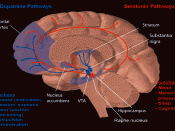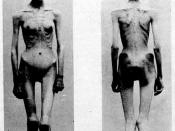Eating Disorders
By Ima Randle
Eating Disorders
Eating disorders are illnesses that include anorexia nervosa (AN), and bulimia nervosa (BN).
Anorexia nervosa
Anorexia is a refusal to maintain a body weight within the minimal range normal for height, weight, and body frame. It is characterized by: denial of weight loss; Being dangerously thin and still feeling fat; and a focus on shape and size of particular body parts. Subcategories of anorexia include: restricting type- severe food restriction and compulsive exercising; and binge/purging type- restrictive diet with intermittent binge eating, followed by purging (self-induced vomiting, laxatives, diuretics, enemas) (Betz & Sowden, 2004).
Complications associated with anorexia are: primarily related to electrolyte imbalances and cardiac problems, which can lead to death; starvation which in turn causes a change in growth hormone levels (diminished secretion of sex hormones) defective development of bone marrow tissue, structural abnormalities of the brain, cardiac dysfunction, and GI difficulties.
In adolescents, growth retardation, delay of menarche, and bone mass reduction may occur. Consequentially, when normal eating is reestablished and laxative use is stopped, the child may develop peripheral edema (Betz & Sowden, 2004).
Psychologic factors associated with most eating disorders are low self-esteem, mood disorders, and lack of social spontaneity or excess emotional restraint. Familial factors that may contribute to development of this disorder include controlling/ over protective parents and the anorexics unconscious attempt to gain control. The anorexic may be dissatisfied with the diminished weight loss of secondary sexual characteristics related to difficulty accepting maturation into adulthood (Betz & Sowden, 2004).
The criteria used to diagnose an anorexic include the following: refusal to maintain ideal body weight; weight loss leading to less than 85% of ideal wt; failure to make expected weight gain during growth; intense fear of gaining wt or becoming fat even though underweight; disturbance...


